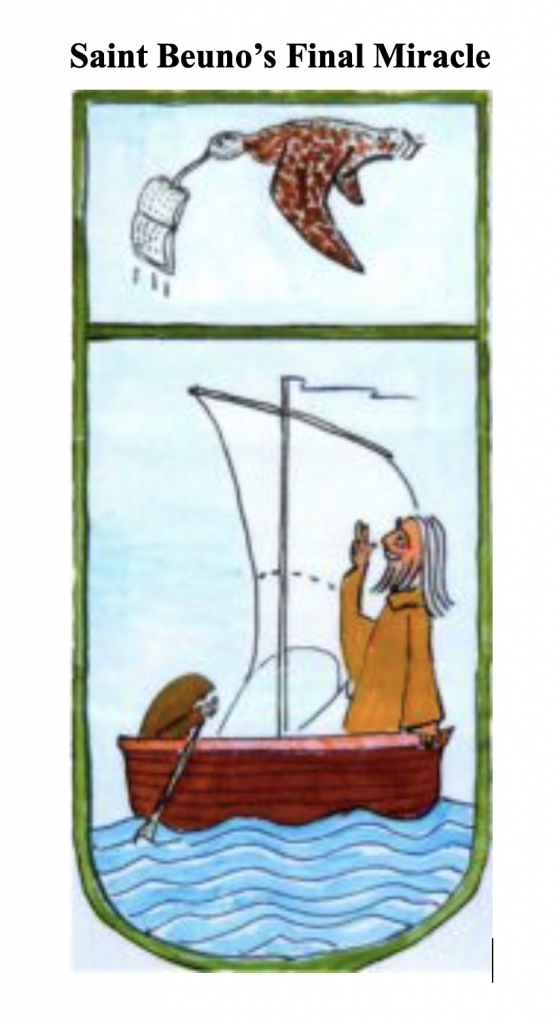Curlew Day

In chapter 5 of She Wore a Yellow Dress, I describe my first date back in 1965 with a fellow Hull University undergraduate who became my wife. She curiously asked about my favorite hobby, and when I said it was bird watching, she wanted the name of my best-loved bird. Willingly, I told her it was the curlew because of its large and golden appearance, its mesmerizing summertime call of cur-lee cur-lee cur-lee, and its behavior when protecting its nest. These birds often bred in waterlogged grassland fields close to our family farm. During my youth, I would hide behind the hedgerows (long since removed), hoping to see the parents, and find the location of their nest. Curlews are highly secretive. Their nests are usually hidden by long grass, and they will leave the nest by taking flight some distance away from where they are nesting. They sometimes pretend to be injured, dragging their wing behind them to persuade you to follow them. When I eventually would find the nest, it would usually contain four dark olive-green eggs with brown markings.
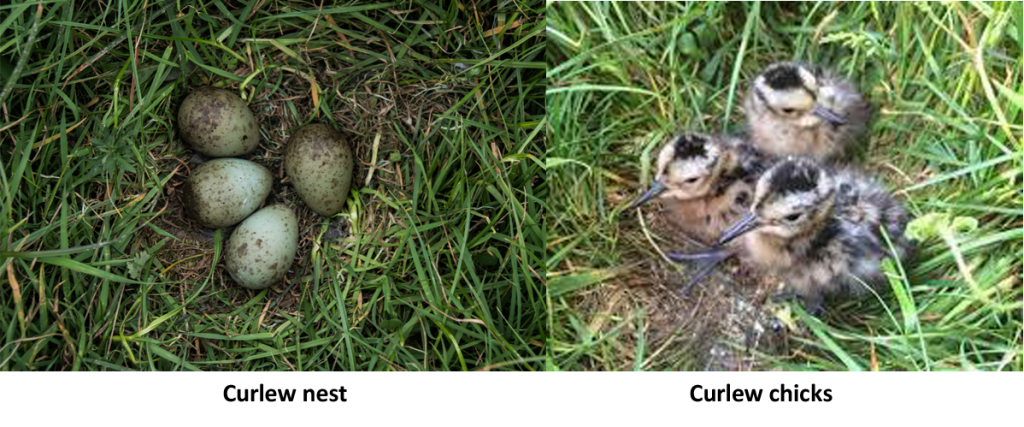
And who could not be hypnotized by these birds as they poured out their distinctive bubbling call, like a kettle rising to the boil, but never quite getting there. I would often hear the sound late into the night.
Regrettably today, because fields are drained and long grass is no longer grown, the curlew has moved on. Most of their past territory in the west of Britain has been lost, and virtually none breed in lowland England.
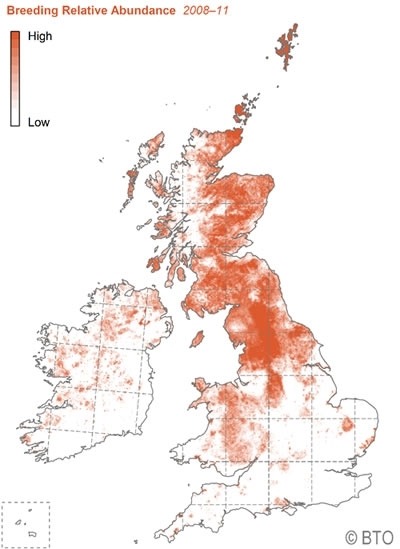
Curlews are migratory large wading birds, mottled brown and gray, with long bluish-colored legs, and very distinctive long down-curved bills. The bill length is approximately six inches (15 cm). In the UK, pairs nest on the ground in wet pasture, and on moorland and heathland, and in marshes. They are site-faithful, returning to the same location each year so long as conditions remain suitable, and their chicks often establish nesting sites nearby. The species is omnivorous, eating both plants and invertebrates, and are often seen probing soggy ground with their long bills to find worms, grubs, and insects. The bill is longer than their tongue and acts like a pair of tweezers or chopsticks as they extract food. They may then toss it into the air and catch it on their tongue before swallowing it.
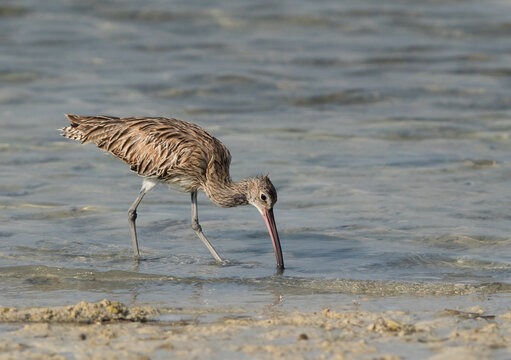
Eurasian curlew feeding
Because of the decline in curlew numbers since the 1970s, the bird is now placed on the UK’s “red list” of endangered species. It is likewise listed as vulnerable to extinction in continental Europe. Reasons include habitat loss (afforestation, urban development, drainage of wetlands, and shift to arable farming), changes in farming practices (increased mowing of fields, destruction of nests by farm equipment, and early cutting of green grass for silage), more predators (foxes, badgers, crows), and climate change (loss of water, drying out of breeding sites, ground too hard for curlew bills, and the inundation of coastal habitats). To raise awareness of this situation the English-based Curlew Action Group has declared April 21 as World Curlew Day.
An estimated 25 percent of the Eurasian birds’ global population breeds in the UK today, numbering close to 70,000 pairs, but since the late 1960s its numbers have declined 70 percent. The species has never had it easy with humans. It was often hunted and eaten, and it was not until during World War II that butchers in the UK were banned from selling its flesh.

Curlews are mentioned in several old English recipe books, and in Cornwall they were so common that their meat was stuffed into pies. Evidence of their revival by the mid-20th century, however, is mentioned in the 1958 edition of the York Bootham School Bird List. Under “curlew” it reports:
At the end of the 19th century, the curlew seems to have been confided to the moorland parts of Yorkshire as far as breeding was concerned. Nowadays the picture is quite different. They have bred for several years in locations around York and during the severe winter of 1947, many were seen along the River Ouse.
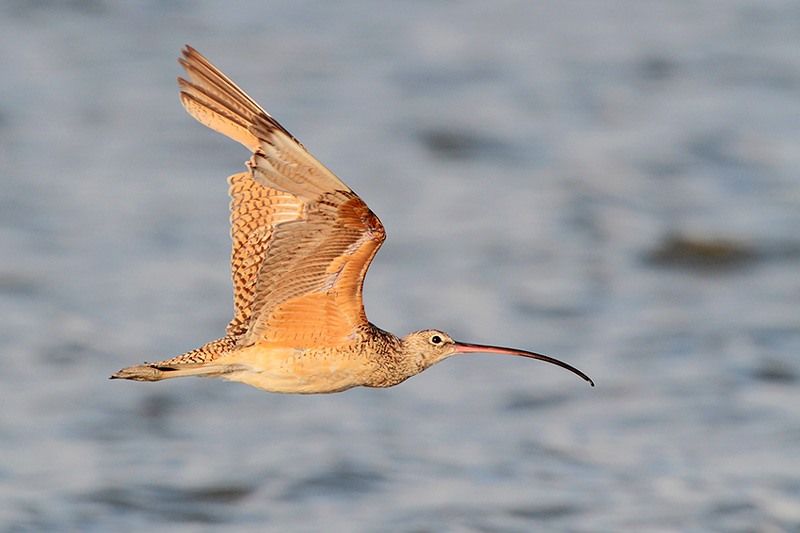
North America long-billed curlew
In North America, the Eurasian species is not present except as a very rare vagrant. There are three other curlew species, however, native to the continent, with the long-billed curlew the most common. This is the curlew I have seen most typically since moving to California. It has an estimated population of 125,000 to 160,000, and its down-curved bill is slightly longer than the Eurasian variety, at 8 inches (20 cm). The bird is a foot tall (30 cm), and is the largest shorebird in the United States. Its coloring is mainly mottled brown, with a pale cinnamon belly, and in flight, it displays upper and lower wings that are slightly cinnamon. Because of the long bill, it was nicknamed the candlestick bird, and it is this alias that is one of the alleged sources of the name for Candlestick Point in San Francisco. Apparently, long ago, the long-billed curlew was plentiful in this area.
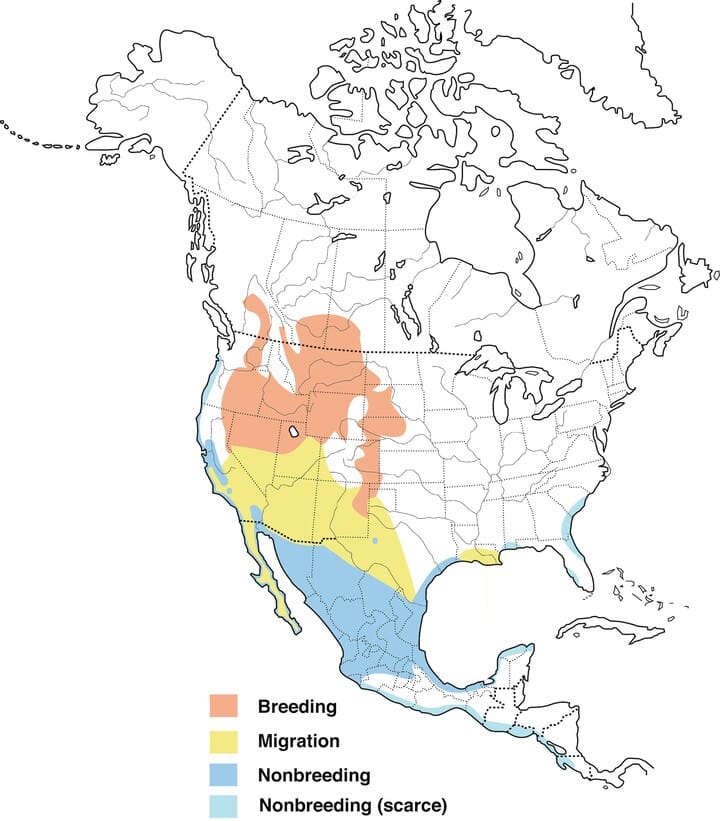
Long-billed curlew Range Map

Marbled godwit
In size, shape and color, the long-billed curlew is similar to the marbled godwit, but the curlew’s down-curved bill is distinguishable from the upturned bill of this other bird. The curlew’s call is a whistled and high pitched curl-e-e-u-u, whereas the godwit gives off a loud kerreck or god-wit sound.
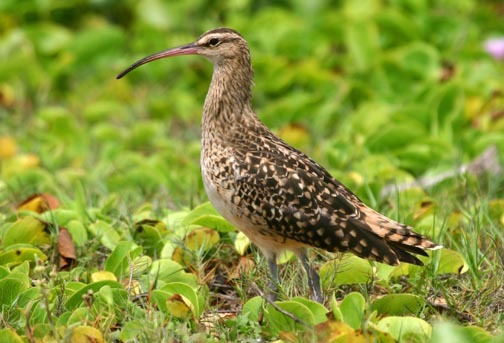
Bristle-thighed curlew

Alaskan breeding grounds of bristle-thighed curlew
There is the much rarer bristle-thighed curlew, so named for the inconspicuous bristle feathers at the base of its legs. It nests in a few hilly areas of north-western Alaska and has an estimated population of 10,000. For winter, it flies non-stop to various south Pacific islands, including Hawaii, Fiji and Samoa. This species, regrettably, is vulnerable to extinction, causing its numbers to be closely monitored in Alaska and measures taken to protect its wintering habitat.
The third species of curlew may now be extinct. The Eskimo curlews’ breeding grounds lay in the far northeastern regions of Canada, and they migrated long-distance to the pampas grass of Argentina. The last confirmed sighting of this species in Canada was during 1987, and it was last recorded in South America in 1939.

Eskimo curlew
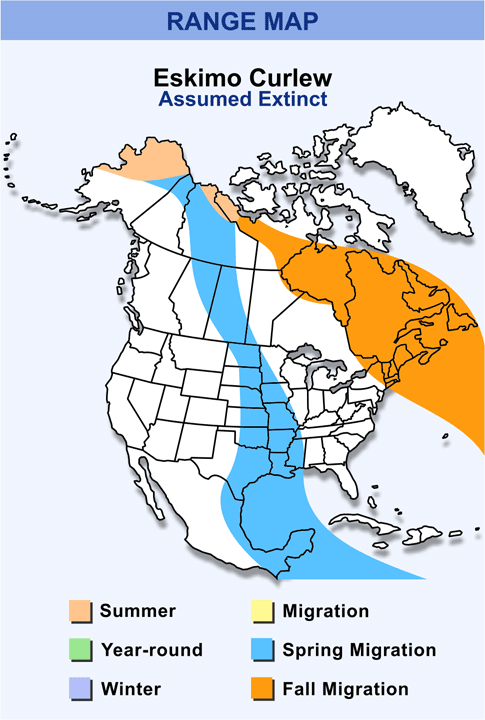
One caution for birdwatchers is not to confuse the identification of curlews with their close cousin, the whimbrel. The latter breed on the vast treeless plains of the frozen Arctic in North America and Eurasia, and migrate south to South America and the shorelines of Africa, south Asia and Australasia. Because of their more remote breeding locations, the whimbrel is less threatened than other curlew species, and maintains a global population of around 1.8 million. They are typically greyish-brown above and whitish below, with two distinct races. The Eurasian whimbrel is white-rumped (very noticeable in flight), whereas the North American subspecies is dark-rumped. The curlew and whimbrel are similar in shape, but the whimbrel is smaller, and its bill, although similarly down-curved, it is not as long as the curlew. Probably the best ways to identify the whimbrel is through its two dark bands across the head, and its rippling whistle that prolongs into a trill.
Like the curlew, it is named after its call.

Whimbrel
There are three other species of curlew worldwide, with only the little curlew not on the endangered species list. It is the smallest curlew, has the shortest bill, breeds in northern Siberia, and spends winter in Indonesia and Australasia. Its population is about 180,000, and the number is stable.
The slender-billed curlew, classed as critically endangered, has a population of under 100, and nests in the peat bogs of Siberia, wintering around the Mediterranean. Finally, there is the endangered Far Eastern curlew, with a declining global population of around 30,000. It breeds in eastern Russia and Mongolia, and winters mainly in coastal Australasia.

Little curlew
Hopefully, this article will help you understand why certain species of bird are headed towards extinction, and why conservation actions are essential. In the UK, efforts are being taken to protect the curlews’ habitat, monitor its nesting sites, cull predators or fence them off from the breeding areas, rear chicks in captivity, and increase public awareness of the vulnerability of the species. The North America situation with the long-billed curlew is less severe, although numbers have declined in the eastern parts of its breeding range. Consequently, the species is placed on the list of “birds of concern”.
Finally, remember that April 21 is World Curlew Day. The date marks the Feast Day of St. Beuno in Wales (who died 21 April 640) and the legend that survives him. As the story goes, he was a Christian missionary, crossing the Menai Strait to Anglesey to lead a sermon when he dropped his papers in the water. This would have been a disaster were it not for a passing curlew that rescued the book and flew his papers to land to dry and to prepare them for his services. As a thank you, St. Beuno prayed to God for the protection of the curlew and asked that the species become invisible and be allowed to nest safely in long grass free from predators.
